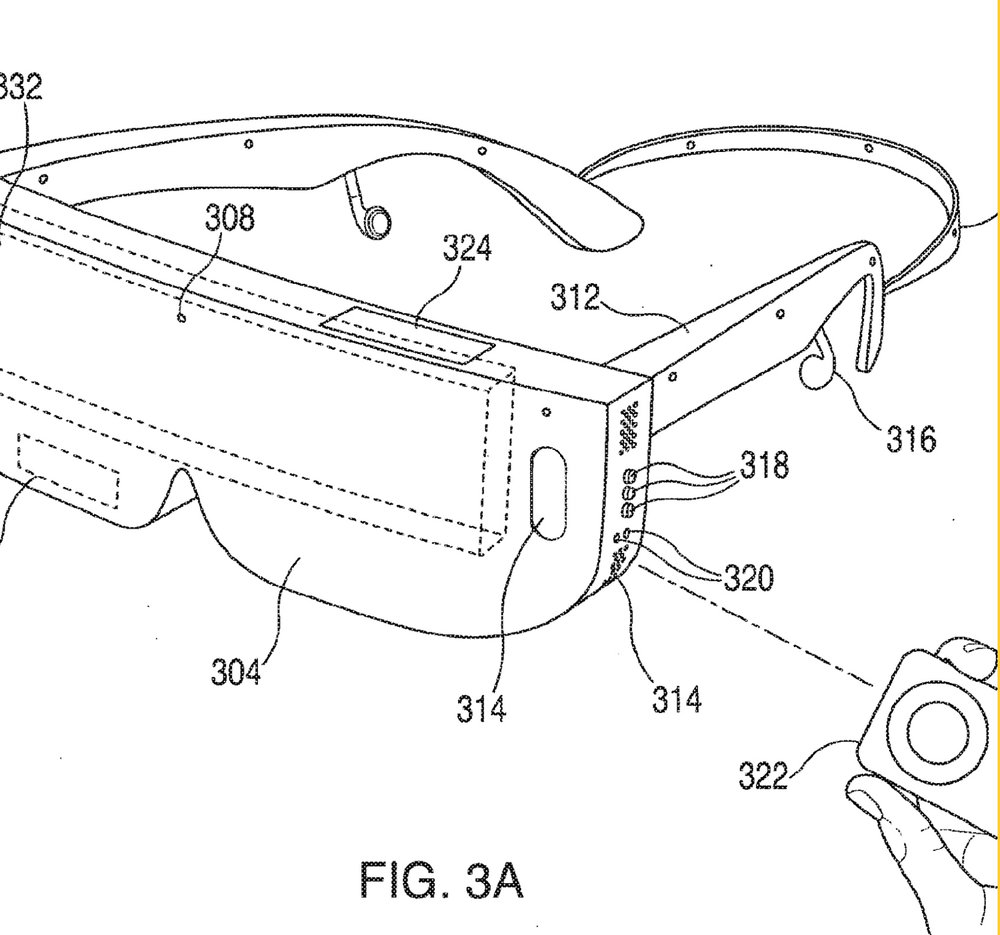Apple has been granted yet another patent (number 201603277799) for an augmented reality (AR) display that could be used with an iPhone. The patent is for a “head-mounted display apparatus for retaining a portable electronic device with display.” Similar to patents 8,957,835 and 9,482,869, it’s for VR goggles that would connect to the smartphone (or perhaps an iPod touch) to a GoPro-ish head mount for viewing media on a private display.

Head-mounted display systems and methods of operation that allow users to couple and decouple a portable electronic device (think iPhone) with a separate head-mounted device are disclosed. The iDevice could be physically coupled to the head-mounted device so that it can be worn on the user’s head.
The iPhone may be operatively coupled to the head-mounted device such that the portable electronic device and head mounted device can communicate and operate with one another. Each device may be allowed to extend its features and/or services to the other device for the purpose of enhancing, increasing and/or eliminating redundant functions between the head-mounted device and the portable electronic device.
Apple has also been granted two patents (20160327986 and 20160327980) for the design of the MacBook Pro with Touch Bar. The patents are both dubbed “portable computing system” and the accompanying graphics show the touch bar implementation.

Here’s part of Apple’s summary of the patent: “A portable electronic device having several features is disclosed. The device can include a retention member that retains flexible circuits extending from a top portion to a bottom portion of the device, thereby allowing some components to be moved from a top portion of the device to a bottom portion. The device may include a cover plate can be secured with a display in the top portion to cover the retention member and other internal components.
“The device can include an omni-directional port designed to receive a connector different orientations and provide power to the device. The device can include a flexible keyboard having butterfly keycaps. The device can include an array of openings for an audio driver, with some of the array including through holes and blind holes. The device can also include a touch pad having a force feedback sensor and a haptic device.”

